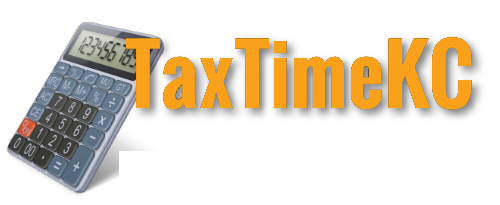
by r Hampton | Aug 28, 2019 | Tax News
IRS Tax Tip 2019-117, August 27, 2019
Tax professionals should review security steps to make sure they are fully protecting sensitive taxpayer data. All tax pros should give their data safeguards a thorough review. Part of this review is following the “Security Six” protections.
Here is more info about these basic protections that everyone – especially tax professionals handling sensitive data – should use:
- Anti-virus software
- This software scans computer files or memory for certain patterns that may indicate there’s malicious software – also called malware – on the device.
- Anti-virus vendors find new issues and update malware daily. This is why it’s important for users to install the latest updates of the software.
- Firewalls
- Firewalls provide protection against outside attackers. The firewall shields computers and networks from malicious or unnecessary web traffic. This helps prevents malicious software from accessing the user’s system.
- Two-factor authentication
- Two-factor authentication adds an extra layer of protection beyond a password.
- The returning user enters credentials like a username and password. Then, there’s another step, such as entering a security code.
- Backup software or services
- Users should routinely back up critical files on their computers and hard drives to external sources.
- Drive encryption
- Because tax professionals keep sensitive client data on their computers, users should consider drive encryption software.
- Drive encryption is also knowns as disk encryption. It transforms data on the computer into unreadable files. This means only people who are authorized to access the data can do so.
- Virtual private network
- Many tax firms’ employees must occasionally connect to unknown networks or work from home. So, the office should establish an encrypted virtual private network. This allows for a more secure connection.
- A VPN provides a secure, encrypted tunnel to transmit data between a remote user over the internet and the company network.
More information:
Subscribe to IRS Tax Tips
– Story provided by IRS Tax Tips

by r Hampton | Aug 27, 2019 | Tax News
IRS Tax Tip 2019-116, August 26, 2019
Starting a business can be very rewarding. It can also be a little overwhelming. From business plans to market strategies, and even tax responsibilities…there are many things to consider. Here’s what new business owners can do to help get off to a good start.
- Choose a business structure. The form of business determines which income tax return a business taxpayer needs to file. The most common business structures are:
- Sole proprietorship: An unincorporated business owned by an individual. There’s no distinction between the taxpayer and their business.
- Partnership: An unincorporated business with ownership shared between two or more people .
- Corporation: Also known as a C corporation. It’s a separate entity owned by shareholders.
- S Corporation: A corporation that elects to pass corporate income, losses, deductions, and credits through to the shareholders.
- Limited Liability Company: A business structure allowed by state statute.
- Choose a tax year. A tax year is an annual accounting period for keeping records and reporting income and expenses. A new business owner must choose either:
- Calendar year: 12 consecutive months beginning January 1 and ending December 31.
- Fiscal year: 12 consecutive months ending on the last day of any month except December.
- Apply for an employer identification number. An EIN is also called a federal tax identification number. It’s used to identify a business. Most businesses need an EIN.
- Have all employees complete these forms:
- Pay business taxes. The form of business determines what taxes must be paid and how to pay them.
Taxpayers interested in starting a business can find information for some industries on the Industries/Professions Tax Centers webpage. Each state has additional requirements for starting and operating a business. Prospective business owners should visit their state’s website for info about state requirements.
More information:
Subscribe to IRS Tax Tips
– Story provided by IRS Tax Tips

by r Hampton | Aug 26, 2019 | Tax News
IRS Tax Reform Tax Tip 2019-112, August 19, 2019
Year-round tax planning is important for everyone. Just because a taxpayer already filed their tax return doesn’t mean they don’t need to think about taxes for the rest of the year. In fact, what they do now may affect any tax they might owe next year. It could also affect the refund they expect.
Since federal taxes operate on a pay-as-you-go basis, taxpayers need to pay most of their tax during the year as they earn the income. Taxpayers should make sure they’re having the correct amount of tax withheld from their paychecks. It’s a good idea for taxpayers to do a Paycheck Checkup for these reasons:
- Having too little withheld could lead to a smaller than expected refund.
- Having too little withheld could even lead to an unexpected tax bill.
- Employees who have too much tax withheld will see less money in each paycheck. Having more money in each paycheck may be more helpful than getting a large refund when they file.
Taxpayers can use the Tax Withholding Estimator to check their withholding. All taxpayers should use this tool to do a Paycheck Checkup ASAP if they haven’t already done so in 2019. Some taxpayers should do another Paycheck Checkup even if they already did one this year. This includes anyone whose personal or financial information changes due to a life event. Some life events that can affect withholding are:
- Marriage
- Having a baby
- Getting a new job
- Getting a raise at work
Taxpayers who want to change how much tax is withheld from their paycheck simply need to submit an updated Form W-4 to their employer.
The IRS has several digital tools taxpayers can use to stay updated on important tax information that may help with tax planning. In addition to visiting the IRS.gov website, they can download the IRS2Go app, watch IRS YouTube videos, and follow the IRS on Twitter and Instagram.
Subscribe to IRS Tax Tips
– Story provided by IRS Tax Tips

by r Hampton | Aug 25, 2019 | Tax News
IRS Tax Tip 2019-113, August 20, 2019
Small business owners and others with tax questions can check out the IRS Video Portal to get more information on a wide range of topics. Taxpayers can visit the site to find videos and recorded webinars on topics such as:
Starting a business
Business income
Employers
Filing and paying taxes
The IRS also posts videos on the portal for individuals, tax professionals, governments, and charities and non-profits. There’s also a playlist with videos in Spanish.
Subscribe to IRS Tax Tips
– Story provided by IRS Tax Tips

by r Hampton | Aug 24, 2019 | Tax News
IRS Tax Tip 2019-114, August 21, 2019
Despite major progress against identity and data theft, these threats still happen. They continue to put tax professionals and their clients at risk. To help combat this, the IRS and its Security Summit partners created a new Taxes-Security-Together Checklist. The checklist includes things tax pros can do now to prevent and recognize data theft. It also gives steps tax preparers can follow if they do experience a data breach
Following this checklist is a great starting point for tax professionals who want to protect their offices, computers and data. This tax tip is the first in a series highlighting the items in this checklist.
Here’s a rundown of the Taxes-Security-Together checklist:
Follow these steps, known as the “Security Six” measures
- Activate anti-virus software.
- Use a firewall.
- Use two-factor authentication.
- Use backup software or services.
- Use drive encryption.
- Create and secure virtual private networks.
Create a data security plan
- Federal law requires all professional tax preparers to create and maintain an information security plan for client data.
- The security plan requirement is flexible enough to fit any size of tax preparation firm.
- Tax professionals should focus on risk areas. These include employee management and training, information systems, and detection and management of system failures.
Be on the lookout for common email scams
Recognize the signs of client data theft
- Clients receive IRS letters about tax returns someone else filed using their name.
- More tax returns are filed with a tax pro’s Electronic Filing Identification Number than the preparer actually submitted.
- Clients receive tax transcripts they did not request.
Create a data theft recovery plan including
- Contact the local IRS Stakeholder Liaison immediately.
- Assist the IRS in protecting clients’ accounts.
- Work with a cybersecurity expert to help prevent and stop thefts.
Subscribe to IRS Tax Tips
– Story provided by IRS Tax Tips

by r Hampton | Aug 23, 2019 | Tax News
IRS Tax Reform Tax Tip 2019-115, August 22, 2018
Employers who provide paid family and medical leave to their employees might qualify for a credit that can reduce the taxes they owe. It’s called the employer credit for family and medical leave.
Here are some facts about the credit to help employers find out if they might be able to claim it.
To be eligible, an employer must:
- Have a written policy that meets several requirements (PDF).
- Provide:
- At least two weeks of paid family and medical leave to full-time employees.
- A prorated amount of paid leave for part-time employees.
- Pay for leave that’s at least 50 percent of the wages normally paid to employees.
Applicable dates:
It’s available for wages paid in taxable years beginning after December 31, 2017, and before January 1, 2020.
The amount of the credit:
The credit is generally equal to 12.5 to 25 percent of paid family and medical leave for qualifying employees. The percentage is based on how much employers pay each employee for family and medical leave.
Qualifying leave:
The leave can be for any or all the reasons specified in the Family and Medical Leave Act:
- Birth of an employee’s child.
- Care for the child.
- Placement of a child with the employee for adoption or foster care.
- To care for the employee’s spouse, child, or parent who has a serious health condition.
- A serious health condition that makes the employee unable to perform the functions of their job.
- Any qualifying emergency due to an employee’s spouse, child, or parent being on covered active duty in the Armed Forces. This includes the taxpayer being notified of an impending order to covered active duty.
- To care for a service member who is the employee’s spouse, child, parent, or next of kin.
Claiming the credit:
To claim the credit, employers will file two forms with their tax return. These are Form 8994, Credit for Paid Family and Medical Leave and Form 3800, General Business Credit.
More Information:
Subscribe to IRS Tax Tips
– Story provided by IRS Tax Tips


 TAXTIMEKC
TAXTIMEKC